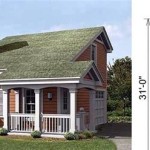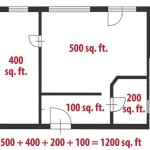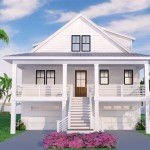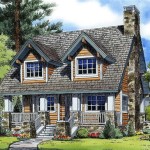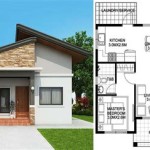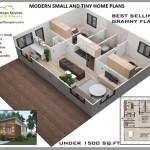House Plans With Inlaw Suite on Main Floor and Basement Apartment: Maximizing Multigenerational Living and Investment Potential
The demand for housing solutions that cater to multigenerational families and offer income-generating opportunities is steadily increasing. House plans incorporating an in-law suite on the main floor and a basement apartment present a compelling solution, addressing both the complexities of shared living and the potential for financial security. These designs require careful planning and consideration of various factors to ensure functionality, privacy, and compliance with local building codes.
Combining an in-law suite on the main floor with a basement apartment within the same dwelling offers distinct advantages. The main floor suite provides accessibility and convenience for elderly relatives or family members with mobility challenges, while the basement apartment can serve as a rental unit for additional income or accommodate older children seeking independent living arrangements. This configuration optimizes space utilization and provides flexible living options to adapt to changing family needs.
The design and construction of these types of homes necessitate a thorough understanding of spatial planning, accessibility standards, privacy considerations, and local regulations. Careful attention must be paid to the layout, ensuring that each living space is self-contained and offers a comfortable and independent living environment for its occupants.
Key Considerations for Main Floor In-Law Suites
The primary objective of a main floor in-law suite is to provide accessible and comfortable living for elderly or mobility-impaired family members. Therefore, accessibility must be a central focus in the design and construction phases.
One critical aspect is the elimination of steps or thresholds. Ramps or zero-entry access points should be incorporated at all entrances to the suite, ensuring seamless transitions for wheelchair users and those with limited mobility. Interior doorways should be wide enough to accommodate wheelchairs, typically a minimum of 36 inches.
Bathrooms within the in-law suite should be designed with accessibility in mind. This includes features such as grab bars near the toilet and shower, a roll-in shower or walk-in bathtub, and a comfort-height toilet. Ample maneuvering space within the bathroom is essential for wheelchair users.
The kitchen within the in-law suite should also be designed to be accessible. Countertops should be at a comfortable height for seated use, and appliances should be easy to reach and operate. Consider installing a pull-down shelving system in upper cabinets to improve accessibility. Under-cabinet lighting can also enhance visibility for those with impaired vision.
Privacy is another important consideration. The in-law suite should have a separate entrance to minimize disturbance to the main living area. Soundproofing measures, such as insulated walls and solid-core doors, can also help to reduce noise transmission between the suite and the main house. Orienting the suite away from high-traffic areas of the house can further enhance privacy.
Beyond accessibility and privacy, the in-law suite should be designed to be comfortable and inviting. Natural light is essential, so large windows should be incorporated into the design. A well-ventilated space is also important for maintaining a healthy living environment. Consider installing a separate HVAC system for the in-law suite to allow for independent temperature control.
Essential Elements of a Functional Basement Apartment
Creating a desirable and habitable basement apartment requires careful planning and attention to detail. A successful basement apartment should feel like a self-contained living space, not just a converted storage area. Several key elements contribute to the overall functionality and appeal of a basement apartment.
Egress is a paramount concern. Building codes typically require basement apartments to have at least two means of egress, one of which must be a direct exit to the outside. This usually involves an egress window well with a ladder or steps, or a walk-out entrance. Egress windows must meet minimum size requirements to allow for safe escape in case of fire. Proper egress is not only essential for safety but also required for legal occupancy.
Natural light and ventilation are crucial for creating a comfortable and livable basement apartment. Maximize natural light by installing large windows or window wells. Consider using light wells with reflective surfaces to bounce sunlight into the apartment. Proper ventilation is necessary to prevent moisture buildup and improve air quality. Install exhaust fans in the bathroom and kitchen, and consider a dehumidifier if needed.
Soundproofing is also vital for ensuring privacy and minimizing noise disturbance between the basement apartment and the main house. Insulate the walls and ceiling with sound-dampening materials, such as fiberglass or mineral wool insulation. Install resilient channels between the drywall and studs to reduce sound transmission. Solid-core doors can also help to block noise.
Plumbing and electrical systems must be designed to meet the needs of a self-contained living space. Install a separate electrical panel for the basement apartment to prevent overloads and allow for independent utility monitoring. Consider installing a separate water heater for the apartment to ensure an adequate supply of hot water. Local building codes may require a backflow preventer to protect the main water supply from contamination.
The layout of the basement apartment should be carefully planned to maximize space and functionality. Consider an open-concept design for the living area and kitchen to create a more spacious feel. A well-designed kitchen with adequate storage and counter space is essential. Ample closet space is also important for storage. Careful consideration of the layout can make a significant difference in the overall livability of the basement apartment.
Navigating Legal and Regulatory Requirements
Before embarking on a house plan that includes an in-law suite and a basement apartment, it is crucial to thoroughly research and understand the legal and regulatory requirements in your local jurisdiction. Building codes, zoning ordinances, and homeowner association rules can significantly impact the feasibility and legality of such a project.
Zoning ordinances dictate how land can be used and what types of structures are permitted on a particular property. Many municipalities have specific regulations regarding accessory dwelling units (ADUs), which include in-law suites and basement apartments. These regulations may address issues such as minimum lot size, parking requirements, setback requirements, and occupancy limits.
Building codes set minimum standards for the construction and renovation of buildings. These codes cover a wide range of topics, including structural integrity, fire safety, plumbing, electrical systems, and accessibility. Compliance with building codes is essential for ensuring the safety and well-being of occupants and for obtaining the necessary permits.
Fire safety is a primary concern in any dwelling, but it is particularly important in homes with multiple living units. Building codes typically require smoke detectors and carbon monoxide detectors in each living unit, as well as fire-rated walls and ceilings between units. Adequate egress is also essential for fire safety, as discussed above.
Homeowner association (HOA) rules can also impact the development of in-law suites and basement apartments. Some HOAs may prohibit ADUs altogether, while others may have specific requirements regarding their design and appearance. It is important to review the HOA covenants and restrictions before starting any construction or renovation project.
Failing to comply with local regulations can result in fines, legal action, and even the forced removal of unauthorized structures. Therefore, it is essential to consult with local building officials and zoning administrators to ensure that your project meets all applicable requirements. Obtaining the necessary permits before starting construction is also crucial.
In addition to zoning ordinances, building codes, and HOA rules, there may be other legal considerations to keep in mind. For example, if you plan to rent out the basement apartment, you may need to obtain a rental license and comply with landlord-tenant laws. You should also consult with a tax professional to understand the tax implications of renting out a portion of your home.
Thorough research and planning are essential for ensuring that your house plan with an in-law suite and basement apartment is not only functional and comfortable but also legal and compliant with all applicable regulations. Consulting with professionals such as architects, contractors, and attorneys can help you navigate the complex regulatory landscape and avoid costly mistakes.
One Story Layout With In Law Apartment Builder

House Plans With In Law Suites Houseplans Blog Com

House Plans With In Law Suites Houseplans Blog Com

Exquisite Mountain Modern Home Plan With In Law Suite And 4 Car Garage 95104rw Architectural Designs House Plans

House Plans With In Law Suites Houseplans Blog Com

House Plans Floor W In Law Suite And Basement Apartement

Find The Perfect In Law Suite Our Best House Plans Dfd Blog

Inlaw Suite House Plans With Detached Mother In Law Fresh New Bungalow Brick

Pinecone Trail House Plan One Story

House Plans Floor W In Law Suite And Basement Apartement
Related Posts


